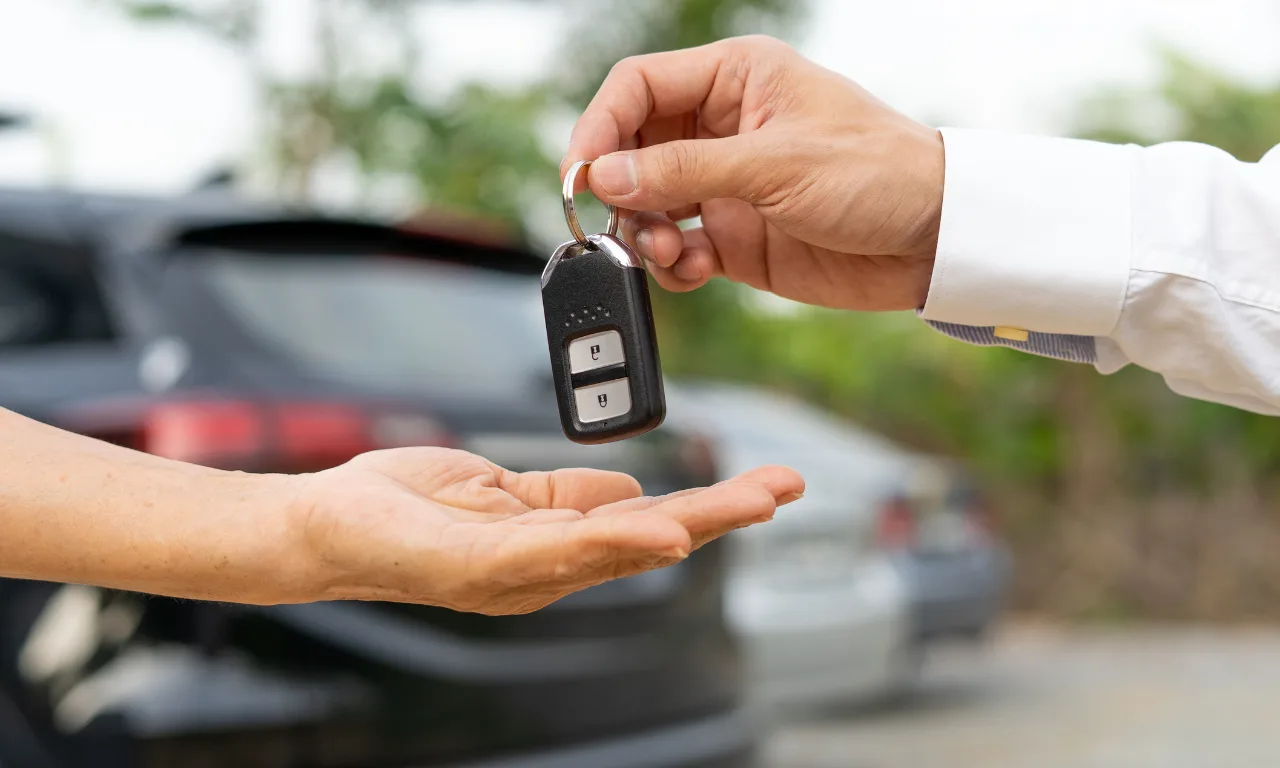Test Ride at Home: The Growth Hack EV OEMs Can’t Ignore

India’s electric‑vehicle market has entered a period of explosive growth. EVs now make up about **5% of the country’s automobile sector[1], and policymakers hope to push that figure to **30% by 2030. Sales of passenger EVs have jumped from fewer than 5,000 units a decade ago to nearly **100,000 units annually. Two‑wheeler EVs dominate the mix, accounting for more than half of all EV sales. The momentum is undeniable but so are the barriers.
Many potential buyers still hesitate. Range anxiety, unfamiliarity with charging, and doubts about performance keep consumers from committing. Dealership test rides, the traditional way to alleviate doubts, simply aren’t working fast enough. They require customers to travel, queue, and often accept a short, scripted drive around a dealership an experience that hardly reflects daily use.
“Test Ride at Home” flips this paradigm. Rather than waiting for buyers to come to showrooms, EV brands deliver the demo vehicle directly to the customer’s door. This seemingly simple change has a big impact: it removes friction, builds trust, and creates a highly qualified sales funnel. At GrowthJockey, we’ve not only championed this idea we’ve implemented it successfully, holding ourselves accountable for measurable growth.
Why Traditional Dealership Test Drives Fall Short
-
Limited availability – Many dealerships, especially outside Tier‑1 cities, don’t have dedicated EV demo vehicles. When they do, availability is often inconsistent.
-
Customer effort – Scheduling, taking time off work, and traveling to a dealership adds friction that deters busy customers.
-
Inadequate experience – Driving an EV around a dealership parking lot does little to address range or performance concerns.
-
Household exclusion – EVs often represent a family purchase, yet only the primary buyer typically participates in a dealership test ride.
These issues contribute to lower conversion rates and slower adoption.
The “Test Ride at Home” Advantage
1. Real‑World Context
Customers get to test the vehicle on their regular routes—home to school, office to market, or navigating potholes. This hands‑on familiarity reduces range anxiety and builds confidence in EV performance.
2. Convenience
Doorstep scheduling eliminates travel time and crowds. Customers can pick a slot that fits their day, often through digital booking tools integrated into websites, apps, or WhatsApp Business.
3. Family Involvement
When the demo happens at home, spouses, parents, or children can also experience the vehicle. For many households, seeing the entire family excited about an EV accelerates the buying decision.
4. Trust and Premium Perception
Doorstep service signals that the brand values customer time and comfort. It mirrors the concierge experience customers associate with premium products, enhancing brand perception.
5. Better Data & Follow‑Up
Booking forms tie directly into a CRM, capturing location, preferred model, and feedback. Sales teams can track each lead’s journey, send tailored offers, and optimize future campaigns.
The Market Context: EV Momentum in India
Recent data underscores why a customer‑centric approach matters now more than ever:
-
India aims to raise EV sales to **30% in private cars, 70% in commercial vehicles, 40% in buses, and 80% in two‑ and three‑wheelers by 2030That translates to approximately **80 million EVs on the road
-
EV sales surged by 49% in 2023, reaching **1.52 million unitsTwo‑wheelers account for 59% of all EV units sold
-
As of early 2025, monthly EV sales were around 170,000 units, up **17% year‑over‑year. However, passenger EVs still represent a small fraction of overall vehicle registrations
These figures signal rapid growth but also highlight the untapped market potential. Most buyers still need reassurance that EVs fit their daily life. That’s where a Test Ride at Home program shines.
How to Execute a Successful Test Ride at Home Program
1. Digital‑First Booking
Allow customers to book test rides through your website, mobile app, or via WhatsApp chatbots. Keep the form short (name, location, preferred timing) and confirm bookings instantly.
2. Hyperlocal Demo Fleet
Distribute a small fleet of demo vehicles across target neighborhoods, ensuring each can reach customers within a 10–15 km radius. Use geospatial planning to reduce travel time and maximize daily demos.
3. Intelligent Scheduling
Use a CRM or AI‑powered scheduling tool to optimize routes, avoid overlapping appointments, and reduce idle time for demo vehicles. Integration with GPS helps track fleets in real time.
4. Trained Demo Specialists
Equip field executives with tablets containing product brochures, EMI calculators, and financing options. Train them to address common EV questions about charging, maintenance, and government incentives.
5. Structured Feedback & Follow‑Up
After the ride, ask for feedback via SMS or email. Positive responses can trigger immediate follow‑ups with offers or referral incentives; negative responses help refine product training or highlight pain points.
Case Study: GrowthJockey’s Pilot Success
To illustrate the impact, consider a GrowthJockey‑managed pilot with a mid‑sized two‑wheeler OEM in Delhi NCR. Over a three‑month period:
-
Test ride requests increased 2.3× compared with a dealership‑only model.
-
Customer drop‑off rates fell by 40%.
-
Conversions grew by 15%.
These metrics showcase how aligning the sales experience with customer convenience turns test rides into powerful conversion tools. It also underscores GrowthJockey’s accountability: we measured every step and tied performance to clearly defined KPIs.
**GrowthJockey’s Expertise **
At GrowthJockey, we don’t just recommend strategies—we execute and measure them. Our responsibilities include:
-
Designing seamless digital journeys: We build easy booking flows integrated with CRM and marketing automation.
-
Managing hyperlocal fleets: We handle logistics planning, vehicle allocation, and field executive training.
-
Data‑driven insights: We track conversions, dwell times, and feedback to continually optimize programs.
-
Full‑stack integration: We tie test rides into financing offers, after‑sales services, and loyalty programs.
Our goal is simple: make “Test Ride at Home” a predictable, scalable growth lever for EV OEMs.
Conclusion
Electric‑vehicle adoption is no longer a niche trend. With government support and consumer enthusiasm pushing India toward millions of EVs on the road, OEMs must rethink how they engage buyers. Traditional dealership test drives can’t keep pace with customer expectations or the urgency to scale.
“Test Ride at Home” addresses the very concerns that slow down adoption: convenience, trust, and real‑world experience. When executed with careful planning, the program becomes a competitive differentiator and a major contributor to sales growth.
GrowthJockey stands ready to help EV brands turn this concept into a measurable reality. By combining digital know‑how, logistical expertise, and data‑driven insights, we ensure that every doorstep demo isn’t just a courtesy—it’s a conversion opportunity.
Frequently Asked Questions (FAQs)
1. Why is a doorstep test ride more effective than a dealership test ride?
A doorstep test ride lets customers experience the EV on their daily routes and with their family. This real‑world context builds trust faster than a short drive near a showroom.
2. Do Test Ride at Home programs work for four‑wheelers as well as two‑wheelers?
Yes. While two‑wheeler demos are easier logistically, four‑wheeler OEMs can target gated communities, corporate parks, and residential societies to schedule demos. Proper route planning ensures efficiency.
3. How can OEMs manage the logistics of multiple daily demos?
A combination of hyperlocal fleets, intelligent scheduling software, and trained demo staff ensures vehicles are assigned to the nearest customers and routes are optimized for minimal downtime.
4. Is Test Ride at Home scalable beyond major cities?
Absolutely. After proving the model in Tier‑1 cities, fleets can be expanded into Tier‑2 and Tier‑3 markets. Government EV incentives and growing charging infrastructure make regional expansion feasible.
5. What ROI should OEMs expect?
OEMs typically see test ride request volumes double or triple, drop‑off rates decrease, and conversion rates improve significantly. Because the program directly addresses customer concerns, its impact on sales is immediate and measurable.








